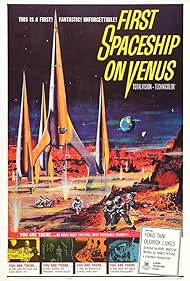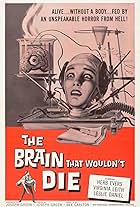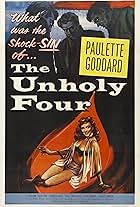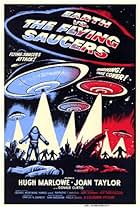IMDb RATING
4.6/10
3.2K
YOUR RATING
When an alien artifact discovered on Earth is found to have come from Venus, an international team of astronauts embarks to investigate its origins.When an alien artifact discovered on Earth is found to have come from Venus, an international team of astronauts embarks to investigate its origins.When an alien artifact discovered on Earth is found to have come from Venus, an international team of astronauts embarks to investigate its origins.
Yôko Tani
- Die japanische Ärztin
- (as Yoko Tani)
- …
Mikhail N. Postnikov
- Sowjetischer Astronaut
- (as Michail N. Postnikow)
- …
Hua-Ta Tang
- Chinesischer Linguist
- (as Tang Hua-Ta)
- …
Lucyna Winnicka
- Fernsehreporterin
- (as Lucina Winnicka)
- …
Klaus Bamberg
- Bit Part
- (uncredited)
Fredy Barten
- Bit Part
- (uncredited)
Christoph Beyertt
- Bit Part
- (uncredited)
Karl Brenk
- Bit part
- (uncredited)
Fritz Decho
- Reporter
- (uncredited)
Karen Fredersdorf
- Brinkmanns Mutter
- (uncredited)
Karl-Helge Hofstadt
- Bit Part
- (uncredited)
Peter Kiwitt
- Bit Part
- (uncredited)
Storyline
Did you know
- TriviaAlthough it was a co-production with a Polish company, it was still the most expensive production for DEFA up to that time.
- GoofsThe narrator mentions that one of the crew has created a special food formula for the crew to be able to consume and digest in zero gravity, yet everyone is walking around as if on planet Earth. This is not a goof, since (at least in the original German version) after a time spent in zero gravity, they show the crew activating an artificial gravity field, which allows them to walk around as if they were on Earth.
- Alternate versionsThis film was released in the United States as _First Spaceship on Venus (1962)_. This version was edited down to 80 minutes, dubbed into English, and had Andrzej Markowski's score replaced by a stock score prepared by Gordon Zahler of the General Music Corporation.
- ConnectionsEdited into Tela Class: Uma Odisseia Brazuca (2008)
Featured review
In the late 50s Russia changed the world by launching Sputnik. This really was a shock; modern readers may not appreciate it as of the magnitude (in the US) of 9-11. In terms of national will, there was a more universal mobilization and commitment of resources than after 9-11, that's for sure.
Both the Russian and American space efforts were at root militarily motivated, but wrapped in more glorious notions or exploration. And both depended on "captured" Nazi scientists. At the time, East Germany was considered the most oppressed of all the communist clients, and the leaders there tried so very hard to establish itself as the center of the communist world for technology (which is how Germans see science).
East Germany as a region was cut out of the space program proper, something they wanted to change. So huge government monies went into this movie, including permissions to use Americanfilm stock and technology.
As it happens, this film proved enormously popular across the communist world and did have a profound effect on the Soviet space program. See my comments on "Planeta Bur" for that background.
The avowed goal was to show Germany as the leader and catalyst of a future international collaboration, peace led by a cleansed nation. So look what we have: a rock from the Gobi desert, a meteor from Siberia, a team mobilized for a trip a team from all continents: American, African, several Asians. And a story from someone widely considered the father of modern science fiction, a sibling through Warsaw Pact.
It really is true that large fortunes, on the order of a trillion dollars, was swung in part by this film, money that could have eliminated all hunger and disease everywhere for generations.
But it has cinematic history as well. Was it the first one to open moving through a starfield as 3D points of light (with titles that recede ahead of us)? A totally fictitious effect that has become necessary since. Otherwise audiences won't think it "real."
The west already had "Forbidden Planet," of course, itself perhaps the most influential science fiction film in the west. In a way, the travel technology was incidental there and in fact the design of the rocket was V2-like. Here, matters of the technology of travel are central.
You have some shades of "Forbidden Planet:" a lost, powerful race. You have some by now staples: lava flows and meteor showers (even in "Star Wars"). There's an Orrery as a model of and control of the attack plan. The black man is less racistly portrayed than Americans would have. That's the point. But he still is the "don't worry, be happy" personality in the group.
They discover a geodesic dome on the planet. In the 60's this was an architectural icon of modern architecture. Interestingly, there is a wonderful sequence where the explorers come upon this thing and are amazed by it. They are talking to the space ship cut to the interior of the space ship and what is the ceiling? Yup, a geodesic dome!
Ted's Evaluation -- 3 of 3: Worth watching.
Both the Russian and American space efforts were at root militarily motivated, but wrapped in more glorious notions or exploration. And both depended on "captured" Nazi scientists. At the time, East Germany was considered the most oppressed of all the communist clients, and the leaders there tried so very hard to establish itself as the center of the communist world for technology (which is how Germans see science).
East Germany as a region was cut out of the space program proper, something they wanted to change. So huge government monies went into this movie, including permissions to use Americanfilm stock and technology.
As it happens, this film proved enormously popular across the communist world and did have a profound effect on the Soviet space program. See my comments on "Planeta Bur" for that background.
The avowed goal was to show Germany as the leader and catalyst of a future international collaboration, peace led by a cleansed nation. So look what we have: a rock from the Gobi desert, a meteor from Siberia, a team mobilized for a trip a team from all continents: American, African, several Asians. And a story from someone widely considered the father of modern science fiction, a sibling through Warsaw Pact.
It really is true that large fortunes, on the order of a trillion dollars, was swung in part by this film, money that could have eliminated all hunger and disease everywhere for generations.
But it has cinematic history as well. Was it the first one to open moving through a starfield as 3D points of light (with titles that recede ahead of us)? A totally fictitious effect that has become necessary since. Otherwise audiences won't think it "real."
The west already had "Forbidden Planet," of course, itself perhaps the most influential science fiction film in the west. In a way, the travel technology was incidental there and in fact the design of the rocket was V2-like. Here, matters of the technology of travel are central.
You have some shades of "Forbidden Planet:" a lost, powerful race. You have some by now staples: lava flows and meteor showers (even in "Star Wars"). There's an Orrery as a model of and control of the attack plan. The black man is less racistly portrayed than Americans would have. That's the point. But he still is the "don't worry, be happy" personality in the group.
They discover a geodesic dome on the planet. In the 60's this was an architectural icon of modern architecture. Interestingly, there is a wonderful sequence where the explorers come upon this thing and are amazed by it. They are talking to the space ship cut to the interior of the space ship and what is the ceiling? Yup, a geodesic dome!
Ted's Evaluation -- 3 of 3: Worth watching.
- How long is First Spaceship on Venus?Powered by Alexa
Details
- Release date
- Countries of origin
- Language
- Also known as
- The Silent Star
- Filming locations
- Production companies
- See more company credits at IMDbPro
- Runtime1 hour 19 minutes
- Sound mix
- Aspect ratio
- 2.35 : 1
Contribute to this page
Suggest an edit or add missing content

Top Gap
By what name was First Spaceship on Venus (1960) officially released in India in English?
Answer
























